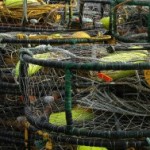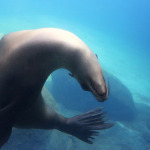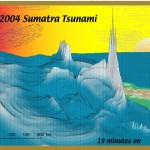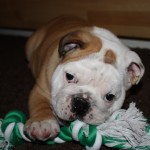The effects of Japan’s Honshu earthquake reached as far as Santa Cruz on the Californian coast. On March 11 the waves came and left tens of millions of dollars in damage to the harbor. On spring break, I wandered down to take a look. This is what I found . . .
One week after a tsunami washed into Santa Cruz harbor and ricocheted around the docks, harbor life has yet to settle. Joggers pass stretches of yellow caution tape. Men in hardhats and plaid shirts clear debris with shovels and high-pressure water hoses. Cafe patrons at the Kind Grind swap yet-to-stale tsunami stories. And, on the docks, Lisa Price’s fourth grade class walk among the boats.
Her class – each child snapped into a life vest – is on their annual O’Neill Sea Odyssey outing, run by the company famous for wetsuits and surfing gear. “Every year we love this field trip,” says Price, who teaches at Calabasas Elementary School in Watsonville, Calif. The students learn basics of marine ecology and navigation, such as how to use a compass. Last year her class left the harbor on the Team O’Neill catamaran and saw dolphins and sharks in the bay. This year, as the debris is cleared from both the water and the parking lot, they’ll board the dual-hulled boat, but remain dockside.
On the morning of March 11 central California was hit by a tsunami, triggered by Japan’s Honshu earthquake. Only six students attended Ms. Price’s class that day. The rest stayed home with worried family members. In the Santa Cruz harbor, surges of 5 to 6 feet left $22 million worth of damaged boats, docks and equipment. Now, in the tsunami’s wake, the harbor and surrounding community is asking how to return to their routine, and which lessons should be drawn.
Nine boats sank during the tsunami and two are still missing, presumed sunken. Dozens of others need repairs or dismantling. At the boat works, Tom McKervey fields phone calls from anxious owners. “Yeah, you’re on the list – twice for some reason,” McKervey says. “We’ll get to you. We’ve got a little triage here – we have to take care of the leakers and the sinkers first.” He replaces the handset, “One of my esteemed customers.”
McKervey, blue eyed and white mustached, manages Aquarius Boat Works – a sort of maritime apothecary and repair store. Above the dusty wooden floors the walls are lined with hooks, ropes and maps. On shelving bins of weights and floats sit next to cans of paint and tubes of Spackling paste. The evening of March 10, McKervey watched news clips of the destruction in Japan. He arrived early at the harbor the following morning to tie down loose boats and riggings. He spent the day on the docks, alternately pushing debris away from boats with a pole and running to higher ground during surges.
“All day long the images of their plight [in Japan] made me think – this is a picnic compared to what those folks had to live through,” he says. “Here only things were broken. Nobody got terribly hurt.” On McKervey’s right hand, his thick middle finger holds a row of stitches. “I got a little cut out of the deal,” he says, dismissing it. He believes he will see a change in the local mix of boaters as a result of the tsunami damage, that is his real concern.
Santa Cruz hosts power boaters, sport and commercial fishermen and sailboat lovers. “Some of these folks are working towards the dream of sailing off into the sunset,” he says. And, while it’s prominence has diminished, Santa Cruz is still a racing port. “I’m sure the harbor is going to shrink, both in people and boats. Many folks could only marginally afford boating before.” McKervey hopes the harbor will design a faster alert for boat owners, perhaps with a telephone chain, instead of relying on TV and radio. If more people had known sooner, he says, they could have waited out the swells in the open ocean.
Residents nearby responded to the tsunami in ways typical of Santa Cruz. On the day, surfers paddled out, hoping for waves worthy of a Japanese woodblock print. Onlookers crowded the bridges stretching over the harbor, boxes of pizza and six packs of beer at their side, shouting encouragement to McKervey and his fellow workers. The next week, a crowd of more than 100 packed the Community Room of the Santa Cruz Police Department to discuss preparations for the next tsunami. Some wanted to know, street-for-street, how safe their houses were. Some wanted to know where to watch the waves roll in.
Steven Ward of the University of California, Santa Cruz said he understood tsunami curiosity – the desire to head for water – and suffered from it himself. But, addressing the crowd as a geophysicist who studies tsunami’s, he urged caution. “Scientists understand the general concepts, but its hard to predict how severe surges will be – especially in real time,” Ward says. “You might expect more of scientists than we can give.”
This is both humbling and frustrating. “My feeling,” says McKervey, “is that these events show us we’re pretty insignificant – it reminds me to be grateful I’m alive.”
For more tsunami action, watch this video on YouTube posted by the Santa Cruz Sentinel. (Warning, clip contains repetitive, unimaginative and vaguely offensive language.):








Comments are closed.